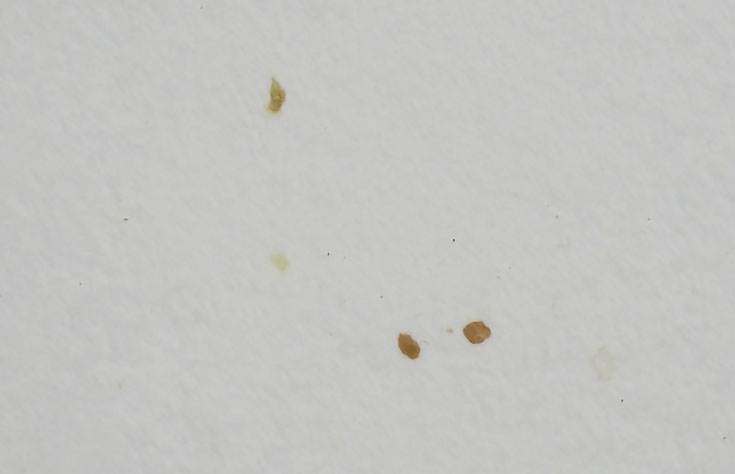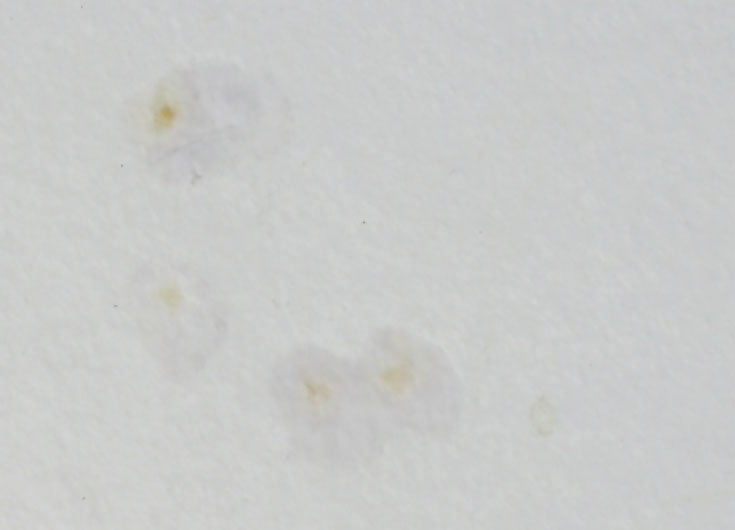Stains on your good drawing paper? Never fear! Stains don’t have to be the end of the world, even if they’re old and dried into the paper.
Some time ago I wrote about what to do if you accidentally spill something on your drawing surface. I came up with some techniques for removing fresh stains from watercolor paper and another on using bleach as a last resort. Both are both good articles if you need to simply minimize the damage caused by a spill.
However, those techniques don’t work the same way if the stain is completely dried and set. So today I’m going to make up for that oversight by showing you what I did when I found old stains on a brand new sheet of drawing paper.
A personal story. . .
I tend to set up for new drawings while I’m still thinking about the composition. Just getting a fresh sheet of drawing paper on a drawing board seems to jog the little gray cells and get the creative juices flowing.
Unfortunately, that’s not always the safest way to work. Recently I set up a fresh sheet of Bristol vellum in preparation for a sunset drawing (with tissue paper) that I had in mind. I got everything ready and selected a reference photo or two, but then the project got set aside.
When I went back to the paper later, I found these stains on it.
I didn’t know what they are or how they got there. They weren’t fly specks, which you might expect, since the paper was on an easel and uncovered. They appeared to have once been liquid. Tea, maybe. Or coffee. But I hadn’t had tea or coffee near the paper since setting it up.
However it happened, the damage was done and, for a moment, the only solution seemed to be cropping the paper to remove the stains. I really didn’t want to do this, because cropping the paper to remove the stains would have resulted in two or three much smaller pieces of paper (and I had my heart set on doing a larger piece!)
So I thought I’d try my hand at removing the stains instead.
Removing stains with an X-acto knife
The best first choice seemed to be scratching the stains off. The paper was Bristol, after all, and could withstand some rough treatment. My hope was that the sizing would have prevented the stains from being absorbed by the paper, and I could just carefully and quickly scratch them off.
Using a small X-acto knife, I lightly scratched at the top stain. Unfortunately I only succeeded in disturbing the surface of the paper. The stain had soaked into the paper enough that it resisted my efforts. Scratching these particular stains away was not going to work.
NOTE: In many cases you will be able to remove stains by very lightly scratching the paper like I did, as long as the paper is smooth and not very absorbent. Try it in a small, inconspicuous section first so that if the knife does any damage the paper, it won’t be impossible to cover up.
Removing stains with damp paper towel
The next thing I tried was a damp paper towel. This is a pretty simple and straight forward process:
Start by folding a piece of paper towel into a small section, then dampen and blot it so it’s not dripping wet. Press the (now) slightly damp towel to the stain with light to medium-light pressure. Don’t leave the damp paper towel against the drawing paper. You want to touch and lift, touch and lift.
If this method is going to work, you will see discoloration on the paper towel and the stain on the drawing paper will get lighter. Repeat until you no longer get discoloration on the paper towel.
A couple things to mention—first, you may need to use more than one piece of paper towel. Once a damp piece of paper towel begins lifting color, it also has the potential to leave color on another part of your drawing paper.
Second, don’t scrub! The combination of moisture and rubbing will leave crumbles of paper towel on your drawing paper or could disturb the surface of the paper.
The crumbles can be brushed away after they dry, but any damage to the paper is not so easy to fix.
NOTE: If the stain begins to lighten with plain water, continue to blot it until you’ve removed as much of the stain as possible. Depending on the stain, you may be able to remove all or most of it with this method. And even if you can’t remove all trace of the stain, you may be able to lighten it enough to cover it with color.
Removing old stains with a bleach solution
What finally worked well enough in my situation was a mild bleach solution. I mixed a solution of about 20 parts water with 1 part chlorine bleach, then used a cotton swab to dampen each stain.
On the top stain, I used light pressure and scrubbed just a little bit with the cotton swab.
On the other stains, I just touched the cotton swab to the stain enough to dampen the stain. I didn’t wet the paper very much, but did treat it a couple of times, letting it dry between each treatment.
This first photo shows the stains after they’ve been dampened the first time, so you can see that the moisture was pretty much only around the stains:
And here you can see the same paper after the second treatment, again before the paper had time to dry:
When using a bleach solution, do not scrub the paper even a little bit if the paper is very absorbent. The red arrow in the photo below shows you how a little scrubbing scuffed my sheet of Bristol. The stain there is lighter, but the surface of the paper has also been disturbed. Potential damage to a softer paper like Stonehenge would be even more pronounced.

The stains indicated by the blue arrow were not scrubbed and the result was much cleaner and shows no damage to the paper’s surface.
Is it perfect? No. But the stains are lightened enough that I’m confident I can work over them and cover them completely. Compared to the original dark blotches, they’re much, much better.
So the next time you find a stain on a sheet of good drawing paper, don’t toss it or crop it. Try one of these methods first.
This post may contain affiliate links.



